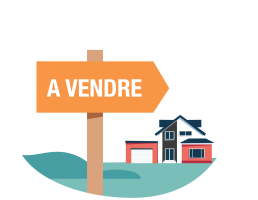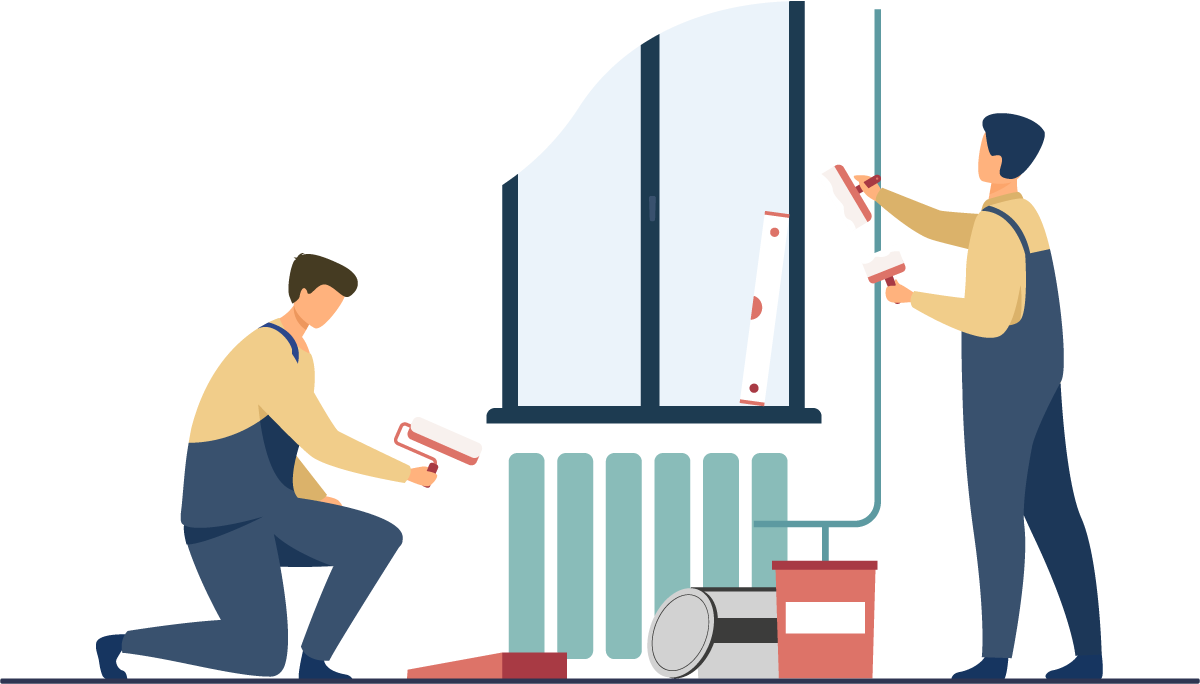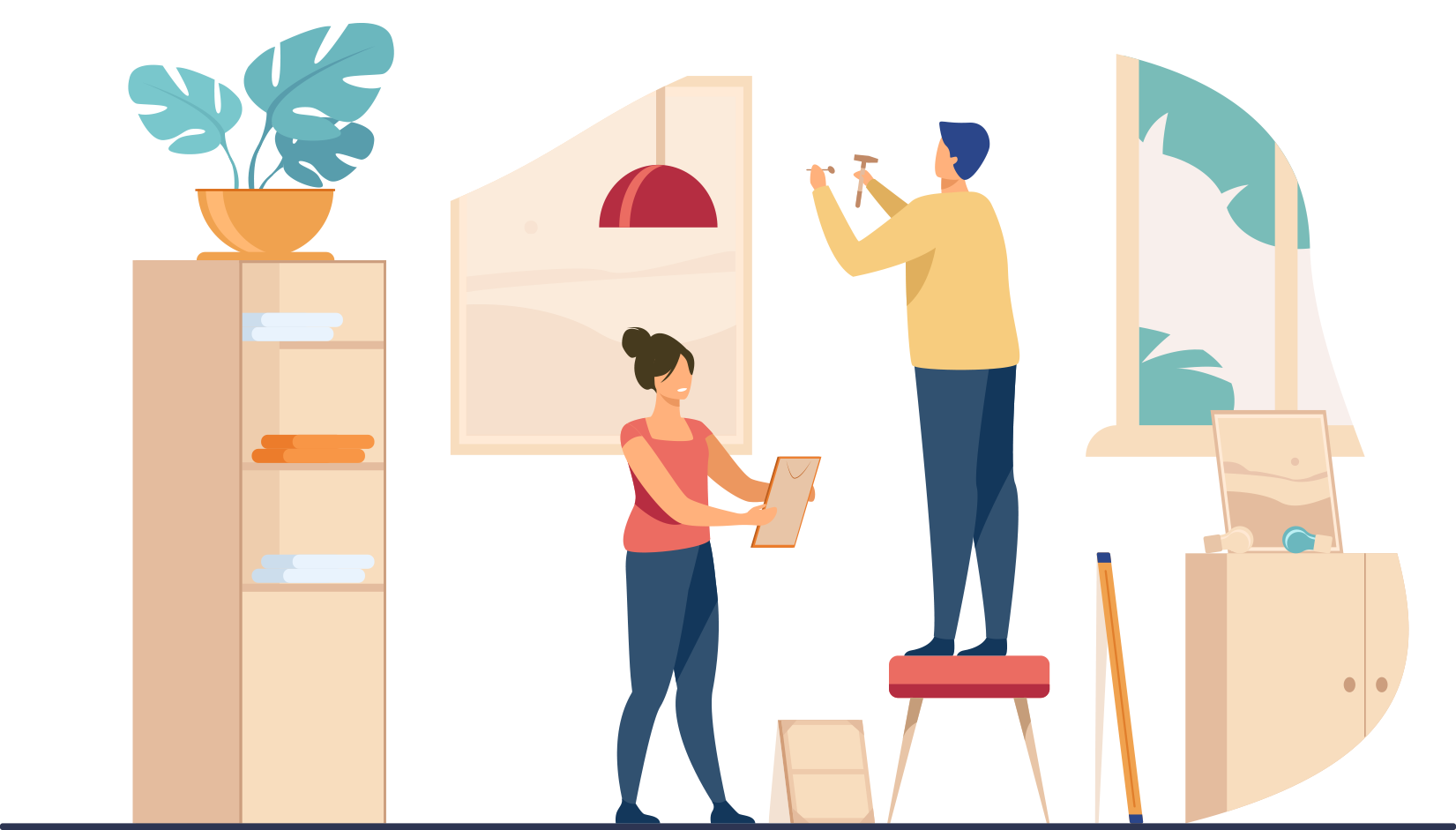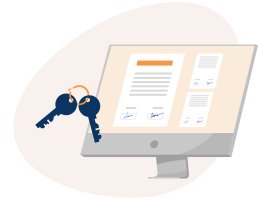Seller's guide
You've probably already seen private individuals put their property up for sale without a real estate agency.
You're wondering how complicated it is to sell your own home. Selfhome shows you that it can be done by 6 steps simple .
Step 1.
Step 2.
Step 3.
Step 4.
Step 5.
Step 6.
Step 1.
Prepare your sale


Do you have financing?
Before taking any steps to sell your home, make sure you have a financial solution for your next home. Ask your banker/broker about your financial situation to avoid any unpleasant surprises. (e.g.: if you already have an outstanding mortgage, you could find yourself facing considerable penalties).

Essential work?
Are you planning any major work on your home (e.g., insulation work, waterproofing, electrical upgrades, etc.)?
To take advantage of a better sale of your home, don't skimp on the means to bring your home into compliance. If necessary, call in the professionals.
You can sell your home as is, but make sure you tell future buyers about it at the time of sale.

Home Staging
Competition is fierce, so give your home a makeover and add value!
Creating a warm welcome: As in human relationships, first impressions are always the most important. Take the time to clean up your entrance, install colorful flowers if possible, and make sure the mailbox is in good condition. And don't hesitate to give it a lick of paint if necessary.
Tidying up and depersonalizing : The first step is to clean and tidy up your interior, while depersonalizing it as much as possible. Remove photos and magnetized notes from the fridge, medicine boxes in the bathroom, your many vacation knick-knacks... Buyers need to be able to easily imagine themselves living in your home. What's more, visitors are likely to spend time opening your cupboards and drawers. If it's unrealistic to put everything away perfectly, throw out out-of-date food and clean up anything that looks sticky or unappetizing. Small details make all the difference...
Make a few small improvements: Without completely redoing every room, there are many small, affordable projects that will make a big impact. A new credenza for your kitchen, changing the handles on your cupboard doors, replacing a cracked shower head or repainting the bathroom tiles are just a few inexpensive examples.
Using a virtual tool : Do you want to repaint, but don't know what color to choose? Want to maximize space by rearranging your rooms? There are online home staging tools that will help you visualize the changes before you start your small jobs.
Step 2.
Set your price

Setting the right price
Every homeowner hopes to sell their property for the highest price, but be careful not to set the bar too high, as you risk discouraging many buyers. On the other hand, undervaluing your property won't do you any favors either.
Set your price correctlyFind out about the value of homes for sale or recently sold in the surrounding area. View similar real estate ads on different websites.
Please note that the real estate market can be subject to fluctuations, and market conditions can change rapidly. If the market is currently in decline and properties are selling less well, it's likely that property prices will also be affected. It's important to remain flexible and adapt to changing real estate market conditions in order to sell your property quickly and at the best possible price.

Price per m²
In the link below you'll find statistics from the Observatoire de l'Habitat* with prices per m² by commune.
This will give you an idea of the average price per m² of your home in relation to your locality.
*The Observatoire de l'Habitat was set up by the Ministry of Housing in 2003 to produce the information needed to plan housing policy and inform the public about housing-related issues.
SelfhomeWe would like to inform you that these prices do not take into account any ancillary areas, pitches or the condition of your property. Homes with smaller surface areas generally have a higher-than-average price per m².
You can consult this table
Price per m² per municipality / apartment

Step 3.
Create your ad


- Cleaning & decluttering Before taking photos, make sure every room is clean and tidy. An uncluttered, de-personalized home gives the impression of space and makes it easier for the buyer to project himself.
- Enhancement : Your home probably has some unique features: whether it's a modern kitchen, a sunny terrace, or a beautiful view. Be sure to highlight these highlights in your photos.
- Brightness A bright home is always more attractive. Open curtains or shutters wide and, if necessary, switch on lights to create a warm, welcoming atmosphere.
- Shooting angle To make each room appear spacious, use a wide-angle perspective. Stand in a corner of the room for an overall view.
Set the scene
Arrange furniture attractively and add decorative touches to give a warm, welcoming feel. Don't take photos of old furniture, as this ages your property.
- Detail & precision : Your ad needs to be complete. This means that it must accurately reflect your property, with all its features, to effectively filter applicants and save time during viewings. Clearly mention the strong points, but also the aspects that might need attention.
- Authenticity : An honest and transparent ad creates trust. Don't exaggerate, and don't minimize either. Aim for the buyer's "coup de coeur" at the time of the visit by being faithful to reality.
- Key features : Be sure to include essential elements such as property type, location, price, surface area, year of construction, condition of the property, number of rooms, equipment, availability, and other specifics.

- Professional publication: Let us take care of the posting. Our team will post your ad for you, guaranteeing optimal visibility.
- Free option : If you prefer to do it yourself, Selfhome offers you the opportunity to publish your ad free of charge on our platform. Compared with sites that charge, this is an immediate saving.
- Visibility guaranteed: Our experts make sure your ad reaches the right audience, increasing your chances of a quick sale.
Publish my ad
Step 4.
Manage your visits

Prepare your visits
Once you've published your ad, people will contact you with questions about your home, or to make an appointment - it's up to you. For appointments, use a diary to help you get organized, bearing in mind that a visit can take up to 30 minutes. When making contact, don't forget to include the visitor's contact details (surname, first name, telephone number), as well as the address of the property for sale.
The moment has arrived, the first visitors are ringing the doorbell. Don't be stressed, because who knows your home better than you? Start the visit with the interior of your home (if you're in a condominium, you'll start with the common areas), then finish with the exterior.
At the end of the visit, after answering any questions, inform visitors that they have the opportunity to make an offer.

Visit file
If, at the end of the visit, people show interest in your property and are ready to make an offer, give them a visit file.
Visitors appreciate having a document in which all the necessary information about your home is listed. With this file, you'll make the sale easier for yourself, save time and gain the confidence of the future buyer.
SelfhomeWe recommend the following documents for your visit file:
- The advert for your property that you have created with photos
- Housing plans
- Energy passport (energy performance and thermal insulation)
- The latest management report (for condominiums)
- Your contact details (e.g. business cards)
Don't forget to make enough copies for your scheduled appointments.

Offer management
There's no point in rushing into things: wait for offers from your future buyers before rushing to the first offer. Choose the most attractive offer and move on to the next stage, which is signing the compromis de vente.

Step 5.
Sign your compromise


"A sales agreement is a sale
Once the offer has been accepted, the compromis declares a common agreement between the two parties. Consequently, when the compromis is signed by both sellers and buyers, the property is sold. However, the compromise does not mean that the property can be purchased, as the buyer must prove that he is in a position to obtain a loan from his bank.
However, once the loan has been accepted, all that's left for the seller to do is hand over the compromis to the notaire to finalize the sale with a deed of sale.

What you need to know
The compromise includes:
- Name, registration number and address of sellers and buyers
- Property address
- Brief description of property (ares of land, cadastral number)
- Selling price
- Date and signature of buyers and sellers
- Suspensive clause
Don't forget to secure your sales agreement! A non-professional in the real estate sector must submit the sales agreement to the registration authorities within 3 months of the date of signature, and will be better protected in the event of non-compliance with the clauses (e.g.: leaving the agreement without a bank refusal).
*If the bank does not grant the loan to the buyer, the compromis is null and void. On the other hand, if one of the parties wishes to withdraw from the compromis, he must compensate the other party, generally up to 10% of the sale price mentioned in the compromis. This clause can be included in your compromis to protect both parties.
Step 6.
Deed of sale

The notary's role
The notary is a real estate professional: he is the one who will carry out the transaction between buyer and seller.
Beyond the transaction, he has certain obligations: he must check that there are no mortgages on the property, and the source of funds (money laundering). So don't be surprised if he asks the buyer for bank approval or a bank statement to check that everything complies with the compromise and the law.
Once all the research has been completed, he will send you a draft so that you can check the accuracy of the deed of sale and arrange a meeting between the two parties.

Signing the deed
On the day of signing, you will confirm the official sale of your property and hand over the keys to the buyer (unless a special condition in the compromis stipulates a different date for handing over the keys).
The notary will read the deed in its entirety in front of both parties (buyer and seller) and will commit you to signing the deed of sale if everything is in accordance with the compromis.
The notary acts as an intermediary, collecting the money from the buyer and transferring it to the seller. What's more, it is the notary who registers the property in the buyer's name with the authorities.
Finally, make sure you hand over all the keys to the new owner.
